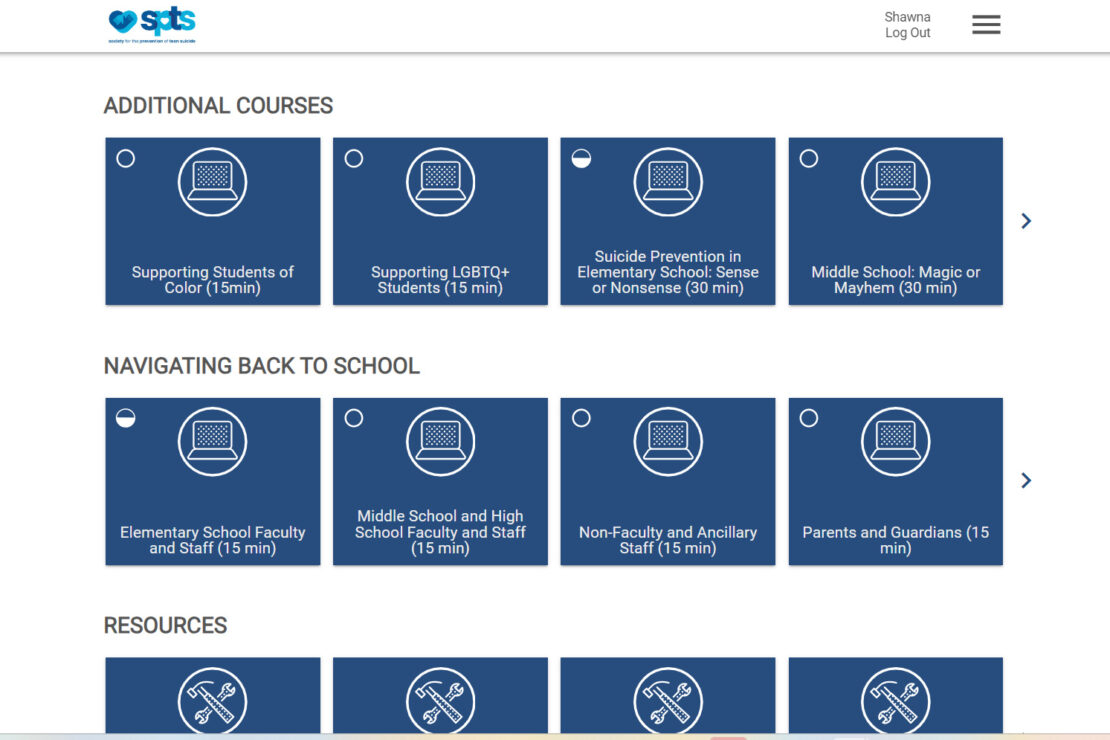As an educator, we know you often identify students in your classroom who, for one reason or another seem vulnerable or at risk. But how do you know if what you’re seeing is part of the normal ups and downs of adolescence or something more severe?
The strategies we suggest for addressing your concerns are simple: When you observe changes in a student’s behavior, pay attention. If the changes concern you, talk with the student if you’re comfortable doing so. Feel free to consult your school’s resources staff about your observations. Your role in youth suicide prevention is critical—staff who have been educated and have an awareness of youth suicide are a school’s greatest prevention resource! SPTS has developed a two-hour suicide awareness training program. For more information about this and our other training materials, please contact us at info@sptsusa.org
Online Training Available
ACT on FACTS is an updated version of the Best Practices, free, online training for educators Making Educators Partners in Youth Suicide Prevention offered by the Society for the Prevention of Teen Suicide. It provides two hours of professional development credit to educators at the discretion of your local school district, but is open to anyone who is interested in reviewing current strategies for youth suicide prevention in schools. To learn more about online training opportunities, please visit sptsuniversity.org
Useful Links
- Parent/Caregiver’s Online Toolkit: Guide to Navigating Youth Behavioral Health
- Suicide Prevention Lifeline
- Access Online Training – Making Educators Partners in Youth Suicide Prevention
- Why You Should Stop Saying “Committed Suicide”
- Coach Awareness Series: Suicide is a Team Sport
- Suicide Awareness in Elementary School
- Memorials after suicide
- Students Return to School
- Understanding Student Reactions to the Anniversary Date of a Peer’s Death
- The Role of the School Board in Suicide Prevention




